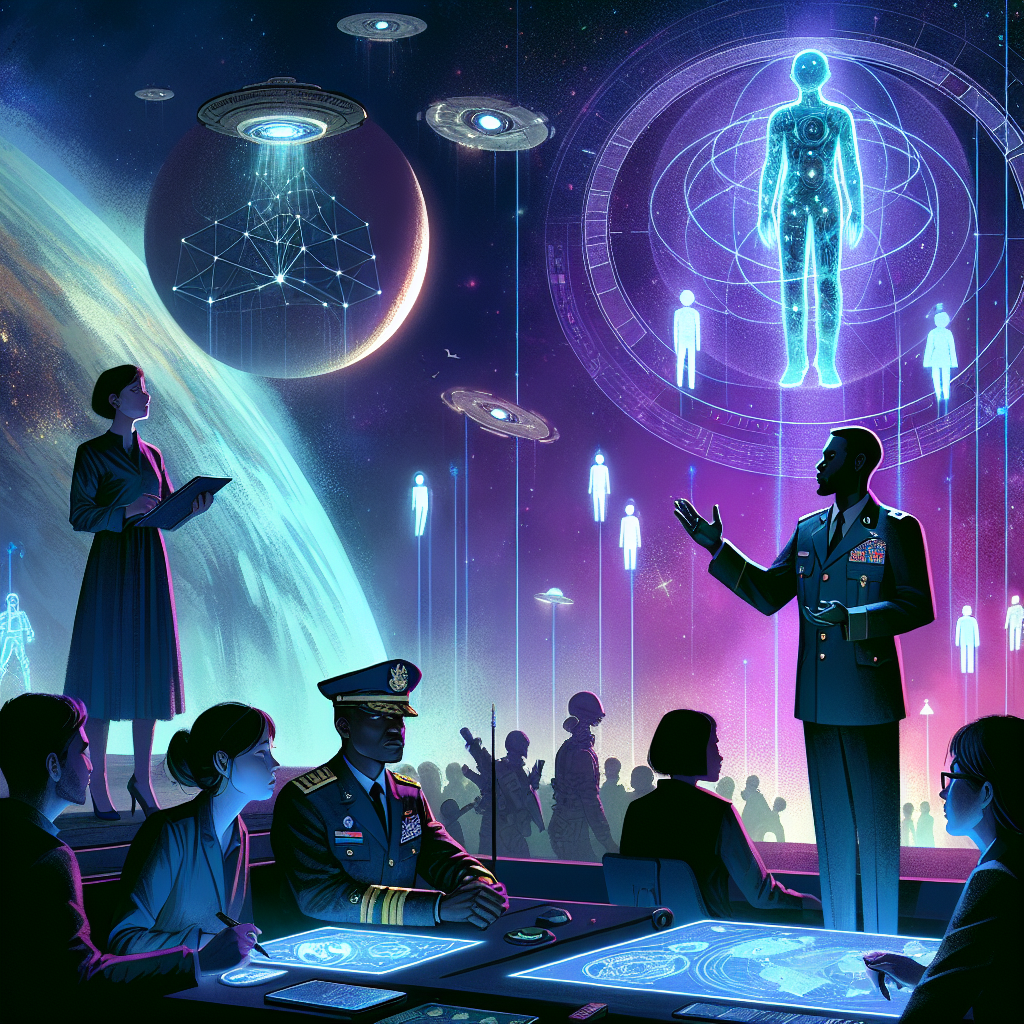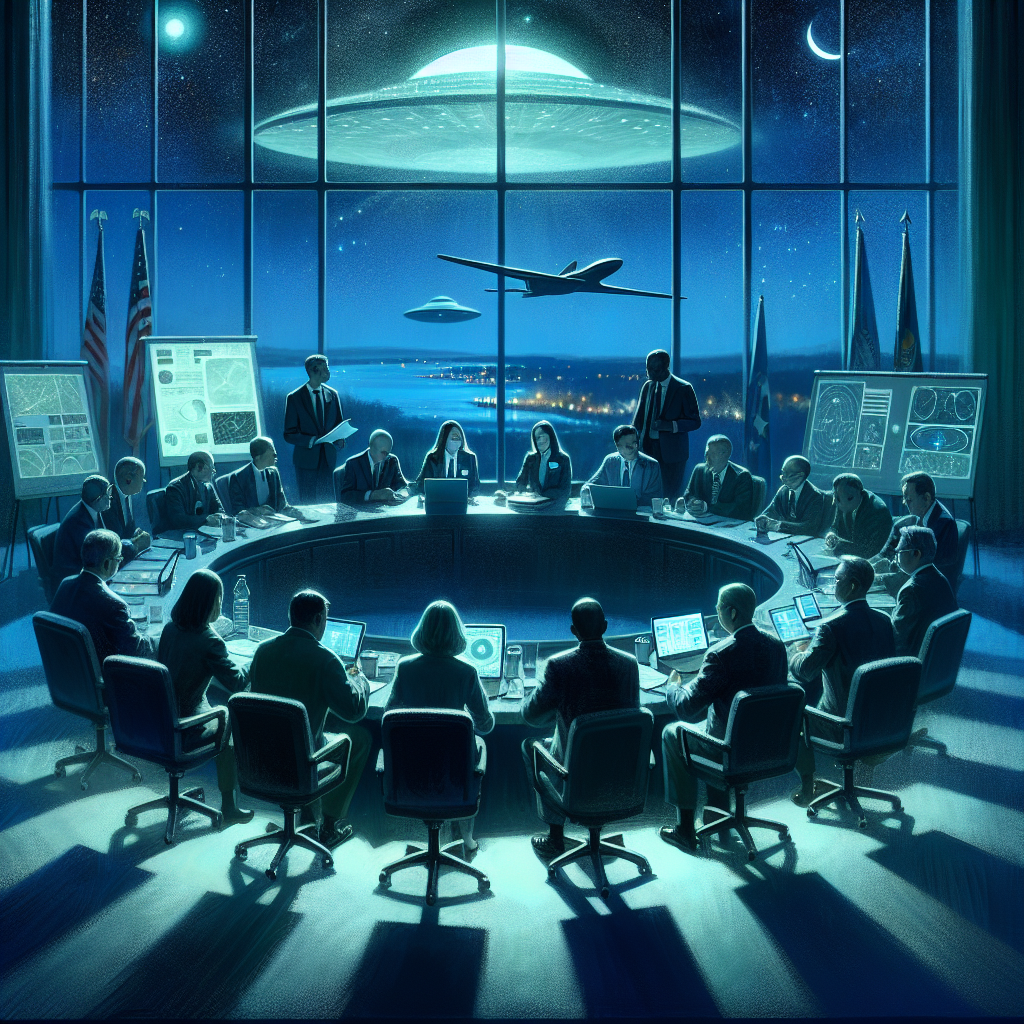UAP Sightings: An Expert Panel Discussion
In recent years, Unidentified Aerial Phenomena (UAP) have sparked global intrigue and debate. Once dismissed as mere conspiracy theories, UAP sightings are now the subject of serious consideration, with governments and scientists taking a closer look. This blog post delves into an expert panel discussion that sheds light on the latest insights and investigations into UAP activity.
Table of Contents
1. Introduction to UAP Sightings
2. The Expert Panel: Who’s Who
3. Key Takeaways from the Discussion
4. The Science Behind UAPs
5. Government Involvement and Disclosure
6. Public Perception and Media Influence
7. Conclusion
8. FAQs

Introduction to UAP Sightings
UAP sightings have been reported around the world, capturing the imagination and curiosity of many. These mysterious occurrences challenge our understanding of aviation, technology, and possibly, extraterrestrial life. With new technology and open dialogue, experts are now better equipped to analyze these phenomena.
The Expert Panel: Who’s Who
The recent panel discussion brought together some of the most knowledgeable minds in the field. Dr. Emily Stevens, a leading astrophysicist, provided insights from a scientific perspective. Colonel James Anderson, a retired Air Force officer, shared his experiences with military encounters of UAPs. Lastly, Dr. Laura Chen, a sociologist, provided her analysis on the societal impact of UAP disclosures.

Key Takeaways from the Discussion
Throughout the discussion, several key points emerged:
1. Patterns in Sightings: Dr. Stevens noted that many UAP sightings follow distinct patterns, occurring in specific geographic “hotspots” and often being detected by multiple witnesses or instruments. This suggests a systematic approach to understanding these phenomena.
2. Technological Anomalies: Colonel Anderson discussed instances where military personnel observed UAPs displaying flight capabilities far beyond current human technology. These encounters demand a reevaluation of existing aerospace technology.
3. Social Reactions: Dr. Chen emphasized the diverse public reactions to UAP sightings, ranging from fear and skepticism to fascination and acceptance. She highlighted how media portrayal plays a crucial role in shaping public opinion.
The Science Behind UAPs
Understanding UAPs requires a multidisciplinary approach. Dr. Stevens explained that while some UAPs could be attributed to natural phenomena or advanced human technology, others remain unexplained. Scientists are using advanced imaging technology and AI to analyze sightings, hoping to uncover patterns or anomalies that could provide answers.
Government Involvement and Disclosure
Governments worldwide are increasingly transparent about their investigations into UAPs. Colonel Anderson highlighted recent declassified documents from the Pentagon, revealing that the U.S. government has been closely monitoring UAP activity for decades. Such disclosures are crucial for building public trust and encouraging further research.
Public Perception and Media Influence
The media plays a pivotal role in shaping public perception of UAPs. Dr. Chen pointed out that sensationalized reporting can often overshadow scientific inquiry. However, balanced media coverage can help demystify UAPs, fostering a more informed public dialogue.
Conclusion
The expert panel discussion underscored the complexity and intrigue surrounding UAP sightings. While many questions remain unanswered, the combined efforts of scientists, government officials, and the public are paving the way for greater understanding. As technology and transparency improve, we move closer to unraveling the mysteries of these fascinating phenomena.
FAQs
1. What are UAPs?
UAPs, or Unidentified Aerial Phenomena, are objects or events observed in the sky that cannot be immediately identified or explained.
2. How do experts study UAPs?
Experts use a combination of eyewitness reports, radar data, and advanced imaging technology to study UAPs. AI is increasingly being used to analyze patterns and anomalies in sightings.
3. Are governments involved in UAP research?
Yes, many governments, including the United States, have programs dedicated to investigating UAPs. Recent disclosures indicate a growing willingness to share findings with the public.
4. How should the media report on UAPs?
The media should aim for balanced reporting, focusing on verified information and scientific analysis to avoid sensationalism and promote informed public dialogue.
The exploration of UAPs is a journey into the unknown, one that challenges our understanding of the universe and our place within it. Let’s continue to explore, question, and discover together. 🌌👽
Looking for a side hustle
Check out one of the best around atm
